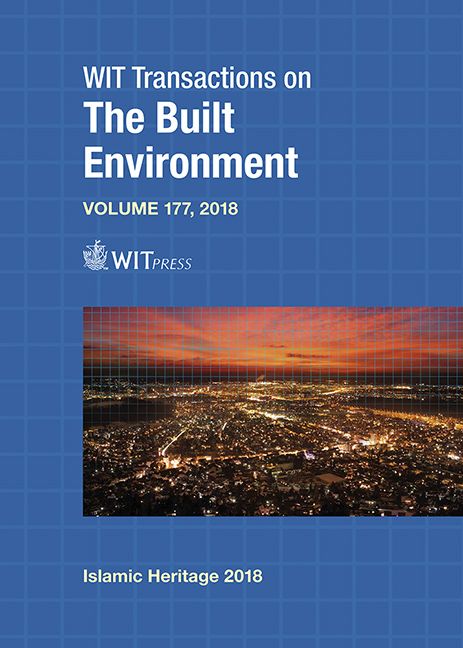THE IMPACTS OF UNESCO’S BUILT HERITAGE CONSERVATION POLICY (2010–2020) ON HISTORIC JEDDAH BUILT ENVIRONMENT
Price
Free (open access)
Transaction
Volume
177
Pages
13
Page Range
1 - 13
Published
2018
Size
593 kb
Paper DOI
10.2495/IHA180011
Copyright
WIT Press
Author(s)
MOHAMMED BAGADER
Abstract
In 2009, the Saudi Commission of Tourism and Antiquities (SCTA), currently the Saudi Commission of Tourism and National Heritage (SCTH), in collaboration with Jeddah Municipality, attempted to inscribe Historic Jeddah in the UNESCO World Heritage Sites (WHS) list to promote the idea of built heritage conservation and lead to tourism development. This attempt was turned down due to the ICOMOS committee suggestions. In 2010, as a response to this informal rejection, the SCTA and Jeddah Municipality worked in tandem to apply a built heritage conservation scheme that copes with UNESCO standards (known as the UNESCO Policy) in order to nominate Historic Jeddah (or some heritage areas/nominated property) again in light of the ICOMOS committee suggestions. This led to a radical shift in the manner of dealing with urban heritage sites in Saudi Arabia in terms of the general framework, the decision-making, the implementation and the management processes. This remarkable shift led to Historic Jeddah to becoming a world heritage site in July 2014. This paper attempts to understand the actual impacts of the UNESCO Policy (UNESCO standards) on the built environment of Historic Jeddah with regard to both the urban/spatial planning and architectural typology. In order to achieve this objective, the author will study several conservation efforts by different actors (stakeholders) from different categories (governmental, non-governmental organizations (NGOs), public and private sectors).
Keywords
built heritage, conservation, impacts, policy, UNESCO WHS list, Saudi Arabia, Historic Jeddah




